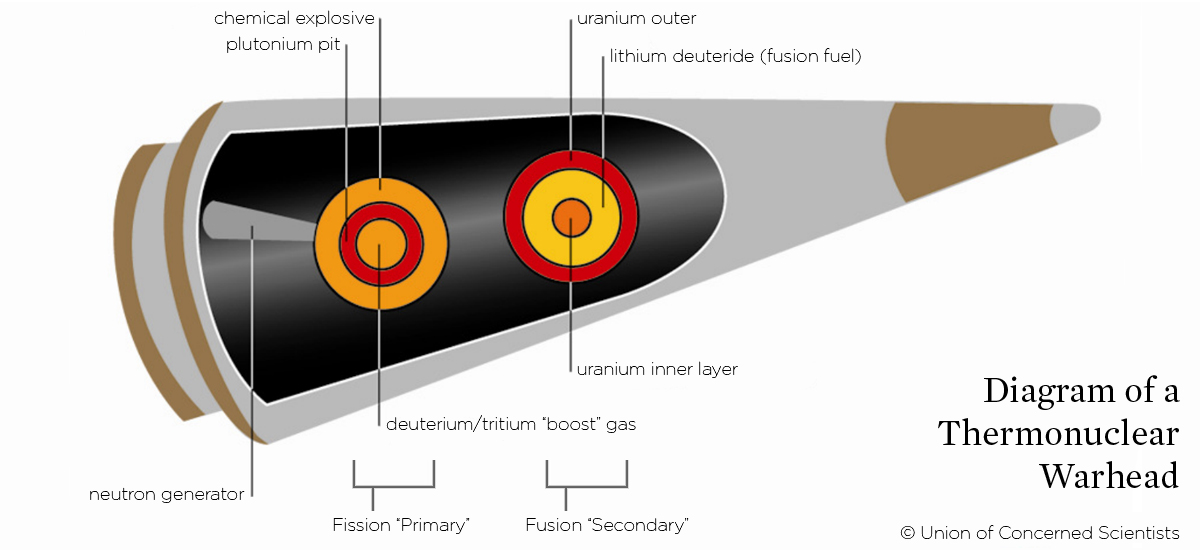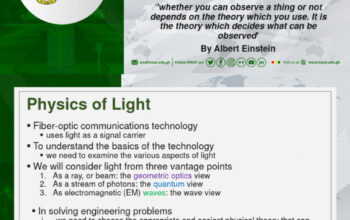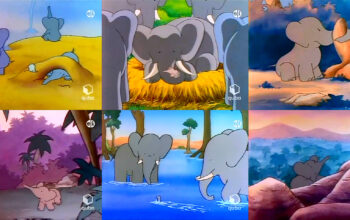The realm of nuclear weapons represents one of humanity’s most profound technological achievements coupled with its most perilous ethical dilemmas. To comprehend the intricacies of how nuclear weapons function, one must traverse the labyrinth of nuclear physics, including the principles of nuclear fission and fusion, the mechanics of explosive devices, and the implications of nuclear deterrence. This exploration aims not only to elucidate the mechanisms underlying nuclear armaments but also to provoke a critical examination of their role in contemporary geopolitics.
The foundation of nuclear weaponry lies in the principles of nuclear physics, particularly those concerning atomic structure. At the core of any nuclear reaction is the atom, comprised of protons, neutrons, and electrons. The nucleus, containing protons and neutrons, is the site of nuclear reactions where immense energy can be released when the nucleus of an atom is altered.
Two primary reactions underpin the operation of nuclear weapons: fission and fusion. Fission, the first type explored in weaponry, involves splitting heavy atomic nuclei — such as uranium-235 or plutonium-239 — into smaller, lighter nuclei. This process releases a tremendous amount of energy, primarily in the form of kinetic energy of the released neutrons and the resulting fragments, as expressed by Einstein’s iconic equation, E=mc². The efficiency of this process is harnessed through a chain reaction where the initial neutrons released from a fission event can initiate further fission in surrounding material, leading to an exponential release of energy.
Conversely, fusion entails the amalgamation of light atomic nuclei to form heavier nuclei. The most notable fusion reaction utilized in nuclear weaponry combines isotopes of hydrogen, namely deuterium and tritium, to produce helium and a neutron. Fusion reactions, which power the sun, yield even greater quantities of energy compared to fission, often several times more per reaction. Thus, the “thermonuclear” or hydrogen bomb operates on the principle of fusion, catalyzed by an initial fission explosion that creates the necessary conditions—extreme temperature and pressure.
The mechanisms for achieving the necessary conditions for fission and fusion vary significantly. Fission bombs, often referred to as atomic bombs, employ either a “gun-type” design or an “implosion” design. The gun-type design works by firing one mass of subcritical material into another through conventional explosives, thereby forming a supercritical mass. In contrast, the implosion design uses a symmetrical arrangement of explosives around a subcritical mass that, upon detonation, compresses the material into a critical mass, thereby initiating an explosive chain reaction. This technological sophistication speaks to the nuanced engineering embedded in nuclear weapons.
Fusion bombs, or hydrogen bombs, require an intricate layering of fission and fusion reactions. Initially, a fission bomb detonates, producing the requisite heat and pressure for fusion to occur. The fusion stage is sometimes further enhanced through the inclusion of additional fissile materials or fusion fuel. The design complexity increases markedly, as successful operation hinges on precise engineering to create optimal conditions for the fusion reaction.
Beyond the mere mechanics of nuclear weaponry lies a larger narrative about deterrence and geopolitical strategy. The devastating footprint of a nuclear explosion prompts drastic measures worldwide. The doctrine of Mutually Assured Destruction (MAD) became a cornerstone of Cold War strategy, wherein the potential for reciprocal annihilation purportedly prevented direct nuclear confrontation between superpowers. This precarious balance of power highlights the dual-edged nature of nuclear capabilities—while they serve as a deterrent, they also perpetuate a climate of pervasive anxiety and insecurity as nations engage in an arms race to bolster their arsenals.
The repercussions of nuclear weapons transcend immediate military utility; they invoke ethical considerations and global humanitarian concerns. The catastrophic humanitarian impact of nuclear detonations is irrevocable, as evidenced by the bombings of Hiroshima and Nagasaki, resulting in mass casualties and long-term ecological damage. Ethical discourse often probes the moral ramifications of possessing and potentially employing such weapons of mass destruction, challenging the dichotomy between national security interests and human rights.
Furthermore, the proliferation of nuclear technology poses significant risks. The spread of nuclear weapons capabilities is often viewed as a threat to global stability, as evidenced by the tensions surrounding nations such as North Korea and Iran. The challenge of non-proliferation is not merely a technical hurdle but a complex geopolitical issue that necessitates coordinated international efforts to mitigate risks associated with nuclear armaments.
In summary, the scientific and technical aspects of nuclear weapons—fission and fusion dynamics, engineering designs, and operational mechanics—serve as a gateway to understanding a broader tableau of ethical and geopolitical implications. The weight of such knowledge compels a reconsideration of the role of nuclear weapons in contemporary society. The dual nature of these technologies, as both a deterrent against conflict and a catalyst for potential catastrophe, illustrates the urgent need for dialogue and policy aimed at promoting disarmament and global security.
Ultimately, to encapsulate the nature of nuclear weapons requires an honest appraisal of our collective understanding of science, ethics, and international relations. The enigma of nuclear weaponry remains an intersection of fascination and trepidation, urging not just scholarly inquiry but also profound introspection into humanity’s path forward in a world where the potential for annihilation coexists with the quest for peace.










